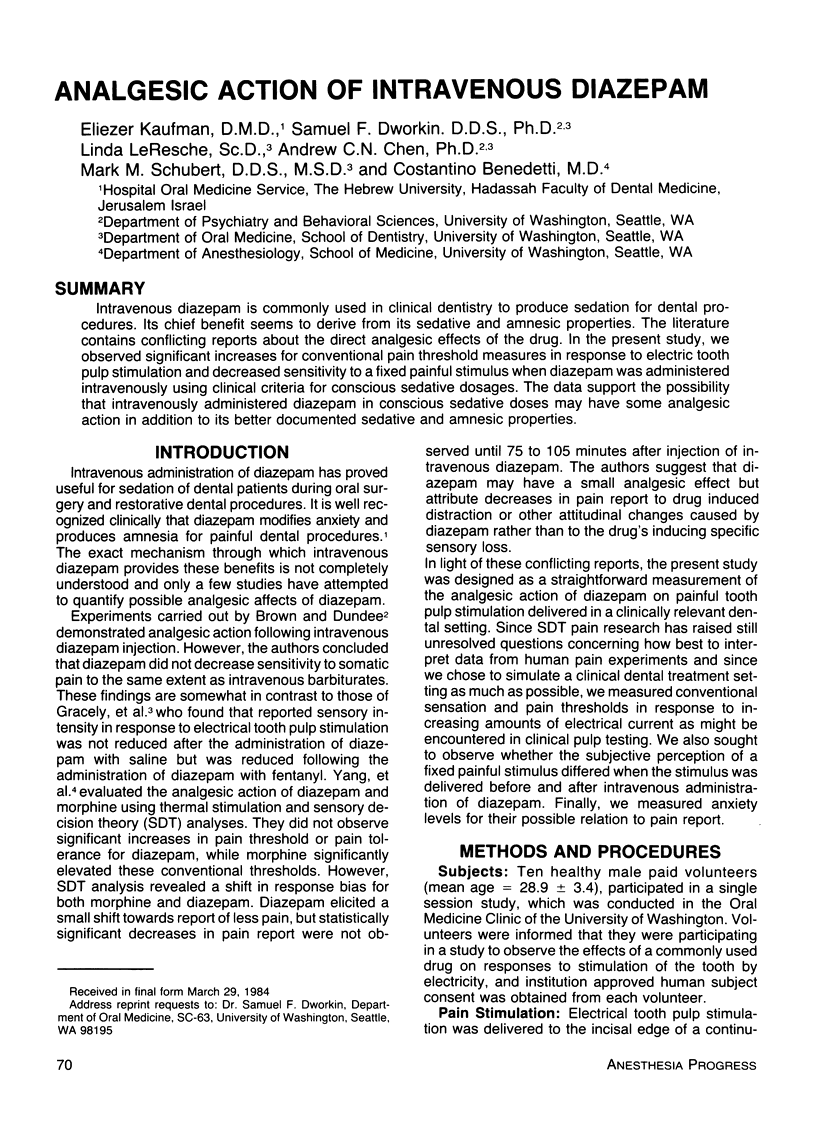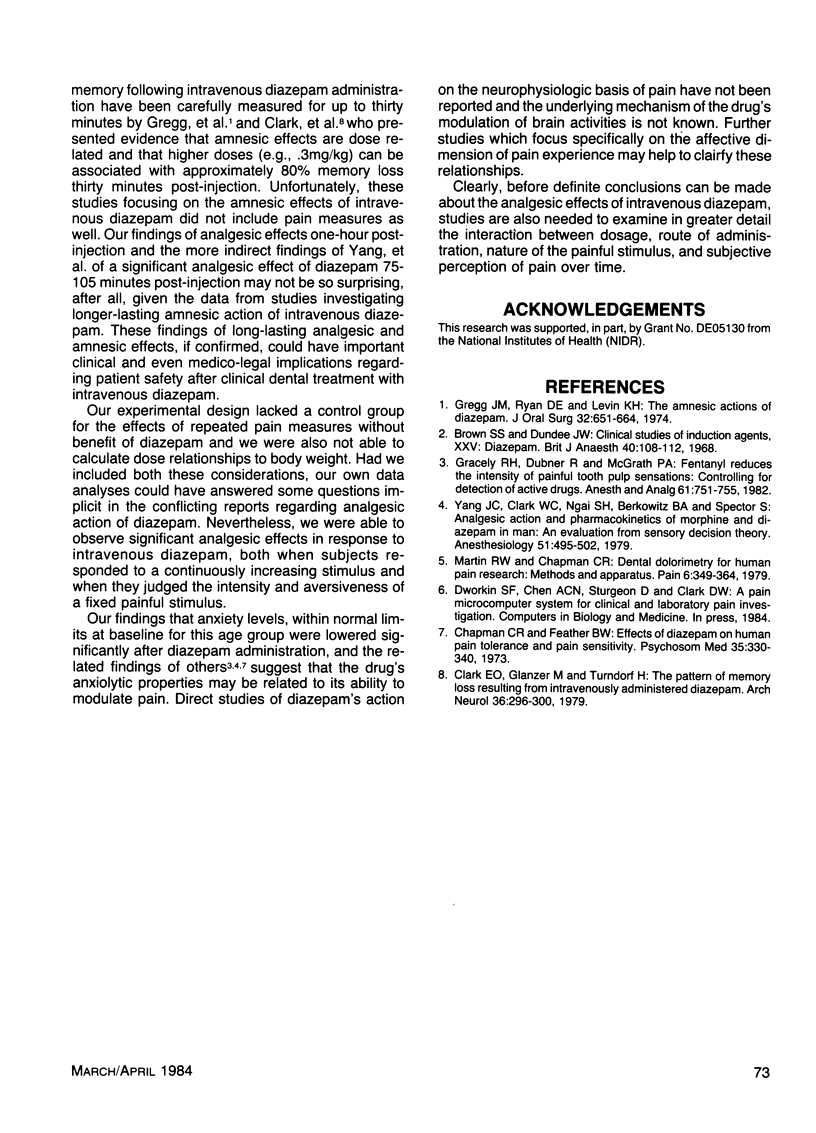Abstract
Intravenous diazepam is commonly used in clinical dentistry to produce sedation for dental procedures. Its chief benefit seems to derive from its sedative and amnesic properties. The literature contains conflicting reports about the direct analgesic effects of the drug. In the present study, we observed significant increases for conventional pain threshold measures in response to electric tooth pulp stimulation and decreased sensitivity to a fixed painful stimulus when diazepam was administered intravenously using clinical criteria for conscious sedative dosages. The data support the possibility that intravenously administered diazepam in conscious sedative doses may have some analgesic action in addition to its better documented sedative and amnesic properties.
Full text
PDF



Selected References
These references are in PubMed. This may not be the complete list of references from this article.
- Brown S. S., Dundee J. W. Clinical studies of induction agents. XXV. Diazepam. Br J Anaesth. 1968 Feb;40(2):108–112. doi: 10.1093/bja/40.2.108. [DOI] [PubMed] [Google Scholar]
- Chapman C. R., Feather B. W. Effects of diazepam on human pain tolerance and pain sensitivity. Psychosom Med. 1973 Jul-Aug;35(4):330–340. doi: 10.1097/00006842-197307000-00007. [DOI] [PubMed] [Google Scholar]
- Clark E. O., Glanzer M., Turndorf H. The pattern of memory loss resulting from intravenously administered diazepam. Arch Neurol. 1979 May;36(5):296–300. doi: 10.1001/archneur.1979.00500410074011. [DOI] [PubMed] [Google Scholar]
- Gracely R. H., Dubner R., McGrath P. A. Fentanyl reduces the intensity of painful tooth pulp sensations: controlling for detection of active drugs. Anesth Analg. 1982 Sep;61(9):751–755. [PubMed] [Google Scholar]
- Gregg J. M., Ryan D. E., Levin K. H. The amnesic actions of diazepam. J Oral Surg. 1974 Sep;32(9):651–664. [PubMed] [Google Scholar]
- Martin R. W., Chapman C. R. Dental dolorimetry for human pain research: methods and apparatus. Pain. 1979 Jun;6(3):349–364. doi: 10.1016/0304-3959(79)90053-8. [DOI] [PubMed] [Google Scholar]
- Yang J. C., Clark W. C., Ngai S. H., Berkowitz B. A., Spector S. Analgesic action and pharmacokinetics of morphine and diazepam in man: an evaluation by sensory decision theory. Anesthesiology. 1979 Dec;51(6):495–502. doi: 10.1097/00000542-197912000-00003. [DOI] [PubMed] [Google Scholar]


